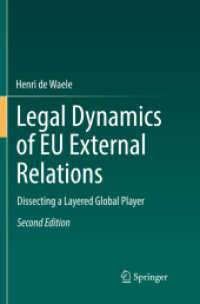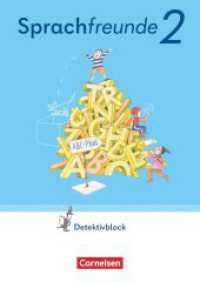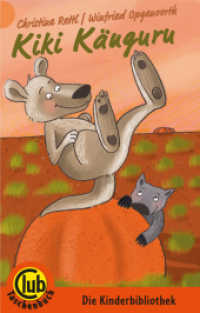- ホーム
- > 洋書
- > ドイツ書
- > Social Sciences, Jurisprudence & Economy
- > Environment, Agriculture, Forestry
- > Agriculture & Gardening
Full Description
Finally, the book indicates fields of action for the establishment of sustainable livestock farming. The book will appeal to stakeholders in science, society, economy, policy, agricultural industry, stakeholders in veterinary practice and agriculture.








